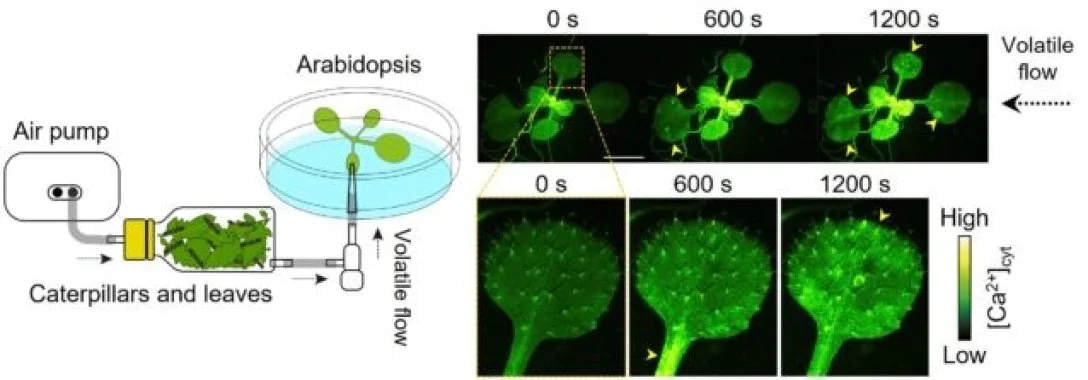For the first time, the researchers were able to observe how plants transmit and receive signals during a “conversation”.
Plants can still communicate with each other unnoticed by us, especially when they are stressed. Previously, scientists have already recorded plants screaming in pain and stress, warning neighbors of an approaching threat. This time, however, the researchers went further – for the first time in history, they managed to record on video how plants communicate with each other, Science Alert writes.
A team from Saitama University in Japan observed how plants are surrounded by a thin fog of airborne compounds that are invisibly to us and used to communicate with each other and protect themselves. Similar to odors, these compounds can scare away hungry predators or warn neighboring plants of their approach.
Scientists first learned about these plant defense mechanisms back in the 1980s, and since then they have been discovered in more than 80 plants. Later, scientists were even able to record the plants screaming in pain and stress. However, how other plants receive and respond to these signals has constantly eluded researchers.
In their work, molecular biologists Yurii Aratani and Takuya Uemura installed a pump to transfer compounds released by damaged and insect-infested plants to their undamaged neighbors. The team also installed a fluorescence microscope to observe the plants.
During the experiment, caterpillars (Spodopteralitura) were planted on cut leaves of plants and the reaction of a second, undamaged plant free of insects was recorded. It should be noted that the plants in the experiment were not ordinary plants; they were genetically altered so that the cells contained a biosensor that glows green when an influx of calcium ions is detected. By the way, human cells also use calcium ion transfer to communicate.
Scientists have been able to visualize how plants react to being bathed in volatile compounds that plants release within seconds of being damaged. To do this, scientists used a plastic bottle in which compounds were concentrated and pumped into the recipient plant at a constant rate.

Photo: Nature Communications
A video shot by the scientists shows how intact plants loudly and clearly perceive the messages of damaged plants, responding with bursts of calcium signals running through their elongated leaves.
The team analyzed airborne compounds and found that two of them, called Z-3-HAL and E-2-HAL, induce calcium signaling. The scientists also managed to determine which cells were the first to respond to plant distress signals. Moreover, pretreatment of plants with a phytohormone that closes stomata significantly reduces calcium signaling, suggesting that stomata act as the plant’s “nostrils.”
According to Masatsugu Toyota, senior author of the study, he and his colleagues were able to record for the first time how plants communicate with each other, transmitting and receiving distress signals.

